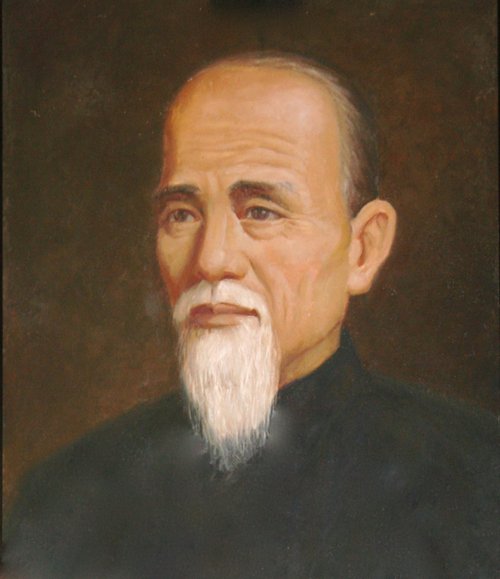
Close


Today the martial arts are practiced as mainstream athletic activities, even celebrated as Olympic sports, but at the time of our founding it was not so. Since ancient times, martial arts proliferated, but, as history and literature have repeatedly shown, imperial ambivalence about martial arts’ defense role and their real or imagined threat to the empire’s stability inevitably resulted in persecution of those possessing and transmitting martial arts knowledge. This is what quite likely forced groups to adopt an innocuous sounding euphemism, gung fu (功夫, skill), to disguise talk of their knowledge, in contrast to the more explicit labels of 武艺 or 武勇, formal terms for the military practice of martial arts or those sanctioned by the state, which would have immediately raised suspicions and drawn undue attention. Born from the turbulent chaos that roiled Southern China in the 19th century, our style of kung fu, Choy Lay Fut (蔡李佛) became one of the most efficient and popular styles of southern kung fu. [As an editorial note, because our origins are from Guangdong Province (廣東省), formerly known as Kwangtung or Canton, all our vocabulary and romanizations we use derive from Cantonese, 廣東話.]
According to our oral traditions, the founder of Choy Lay Fut was a devoted martial artist from Sunwui County named Chan Heung (陳享). His first teacher was a monk named Choy Fook (蔡福). With a foundation firmly in place, Choy Fook then brought his young student to learn from the famed master Lay Yau Saan (李友山). From him, Chan Heung further developed the ferocious fighting techniques and fast movements of the Lay Family kung fu style (李家拳).
After both his teachers were satisfied with his progress they sent him to Baat Pai Saan (八排山) to learn the advanced “Buddhist Palm Style” (佛家掌) from another monk known as 青草和尚, the Green Grass Monk. Combining the best of these three styles with his own knowledge and experience, Chan Heung named his style of kung fu “Choy Lay Fut” as a tribute to his teachers. With Chinese names, the surname is the first name, followed by the given name; Choy and Lay are the surnames of his first two teachers, and Fut (佛), Buddhist, represents his third teacher, the Green Grass Monk, who surrendered his name as part of his worldly attachments when he became a monk.
Over time, Choy Lay Fut grew into four branches. Three of these branches are identically pronounced hung sing but the character hung is written differently for each one. The other branch is called buk sing. For all these branches, the character sing (勝,victory) is always the same, as it is a popular theme among association names:
【鴻勝】The characters for this branch mean “Grand Victory.” This is the style of Choy Lay Fut we teach, named after founder Chan Heung’s top student, Cheung Hung Sing (張鴻勝).
【洪勝】This branch uses the character 洪, meaning “Vast Victory.”
【雄勝】This branch uses the character 雄, meaning “Heroic Victory.”
【北勝】The Buk Sing branch was established by a Choy Lay Fut master named Taam Saam (譚三) near Siu Buk Road in what is today the Yuet Sau district in the city of Guangzhou (廣州市越秀區小北路); the name is derived from the street.
As the style was transmitted, these ancestral masters naturally expressed kung fu through their individual characters differently, so it is important to note that the schools vary only slightly in emphasis or techniques. Regardless of expression, these branches all spring from the same tree of Choy Lay Fut kung fu. To this day Choy Lay Fut thrives as one of the most practical and powerful styles of kung fu, and its practitioners continue to carry on the underlying philosophy and traditions of respect.

Since its founding in San Francisco in 1983, Tat Wong Kung Fu has remained an esteemed and influential institution in the world of martial arts. Envisioned and established by Grandmaster Tat Mau Wong, our school’s roots in the city by the bay have played a crucial role in shaping our identity and teachings. Steeped in Chinese martial arts traditions and techniques, Tat Wong Kung Fu Academy has stood the test of time in the teaching of traditional Kung Fu to thousands of students across generations. San Francisco, with its vibrant multicultural heritage, provided the perfect backdrop for the birth of Tat Wong Kung Fu Academy, shaping the essence of our institution and fueling our commitment to excellence in training. Today, as we continue to expand our reach, establishing a branch in Arizona, we carry the rich history of our roots, serving as a testament to the enduring spirit and timeless allure of our Choy Lay Fut kung fu.

Since its founding in San Francisco in 1983, Tat Wong Kung Fu has remained an esteemed and influential institution in the world of martial arts. Envisioned and established by Grandmaster Tat Mau Wong, our school’s roots in the city by the bay have played a crucial role in shaping our identity and teachings. Steeped in Chinese martial arts traditions and techniques, Tat Wong Kung Fu Academy has stood the test of time in the teaching of traditional Kung Fu to thousands of students across generations. San Francisco, with its vibrant multicultural heritage, provided the perfect backdrop for the birth of Tat Wong Kung Fu Academy, shaping the essence of our institution and fueling our commitment to excellence in training. Today, as we continue to expand our reach, establishing a branch in Arizona, we carry the rich history of our roots, serving as a testament to the enduring spirit and timeless allure of our Choy Lay Fut kung fu.

WhatsApp us